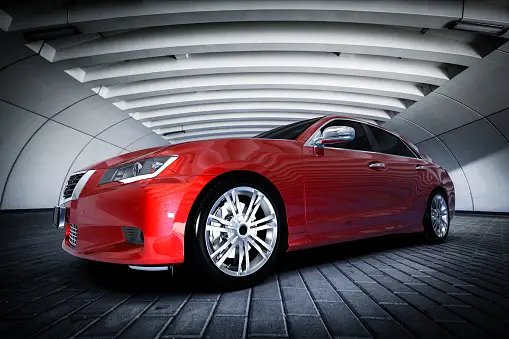How to Get Rid of Scratches on Your Car: A Comprehensive Guide
A scratched car is a frustrating sight for any car owner. Whether it's a small, shallow mark from a parking lot mishap or a more serious blemish caused by a brush with a branch, scratches can affect your vehicle's appearance and value. Many people immediately think of expensive repairs at an auto body shop, but getting rid of car scratches can sometimes be a task you can handle yourself with the right knowledge, patience, and tools.
Knowing how to identify the different types of scratches and applying appropriate remedies can save time, money, and stress. In this guide, we'll discuss the nature of car scratches, identify various types, and provide practical step-by-step instructions on how to get rid of them effectively. By understanding the process and techniques involved, you'll be better equipped to restore your car's finish and make those unsightly scratches a thing of the past.
(424) 221-5326Understanding Car Scratches
Car scratches can generally be categorized into three main types: clear coat scratches, paint scratches, and deep scratches.
Clear Coat Scratches
The clear coat is the outermost layer of a car's paint that gives it a glossy finish and protects the paintwork underneath. Clear coat scratches are the most superficial and are usually caused by minor abrasions like light rubbing against bushes or careless car washing.
Paint Scratches
These scratches penetrate through the clear coat and affect the paint layer. They often occur from more severe abrasions or collisions and are more noticeable than clear coat scratches.
Deep Scratches
Deep scratches extend through the clear coat and paint layer, exposing the metal or plastic surface beneath. They can result from significant impacts or scraping against sharp objects and often require professional repair to prevent rust.
Preparation for Scratch Removal
Before attempting to fix any scratch, you should:
Clean the Area
Wash the affected area thoroughly with car shampoo and water to remove dirt, grease, or debris. This helps prevent further scratching during the repair process.
Inspect the Scratch
Assess the depth of the scratch by rubbing a fingernail over it. If your nail catches in the scratch, it's likely deeper and may require professional automobile detailing or more intensive treatment.
Choose the Right Tools and Products
Depending on the scratch type, you'll need specific tools like microfiber cloths, polishing compounds, rubbing compounds, sandpaper, and touch-up paint.

Removing Different Types of Scratches
Clear Coat Scratches
Clear coat scratches are relatively easy to fix as they don't penetrate the paint layer. Follow these steps:
- Apply a polishing compound to a clean microfiber cloth or applicator pad.
- Gently rub the compound over the scratch using circular motions.
- Buff the area until the scratch fades away.
- Rinse the area with water, then dry it.
- Apply a high-quality car wax to protect the repaired area and restore the shine. After completing scratch removal, it's beneficial to use specialized wax to protect your vehicle's finish. Consider these tips for luxury car waxing to achieve a pristine, high-quality shine.
Paint Scratches
For paint scratches, you might need a rubbing compound, fine sandpaper, and touch-up paint:
- Use fine-grit sandpaper (2000-3000 grit) to smooth the edges of the scratch. Be gentle and avoid over-sanding.
- Clean the area thoroughly after sanding.
- Apply a rubbing compound to restore the paint finish and reduce the appearance of the scratch.
- If the scratch remains visible, use touch-up paint that matches your car's color. Apply a thin layer with a fine brush, allowing it to dry before applying additional layers.
- Once dry, polish the area and apply car wax for added protection.
Deep Scratches
Deep scratches often expose the base metal or plastic and can cause rust or further damage if not treated properly. These require a more thorough approach:
- Begin by sanding down the edges of the scratch with a coarser sandpaper (1000-1500 grit).
- Clean the area and apply a primer suitable for your car's surface material.
- After the primer has dried, apply a layer of touch-up paint in thin coats. Allow each coat to dry before applying another.
- Once the paint is dry, lightly sand the area with a fine-grit sandpaper and finish with a rubbing compound.
- Polish and wax the area to restore shine and protect against further damage.
Car scratches are an inevitable part of driving, but understanding how to identify and fix different types of scratches can help you maintain your car's appearance and protect its value. While minor scratches can often be handled at home with the right tools and patience, deep scratches or widespread damage might require professional assistance. In any case, a proactive approach to car care can prevent future issues, so regularly wash, wax, and inspect your vehicle. By following this guide, you'll be able to tackle most scratches effectively and confidently, ensuring your car looks as good as new. To fully protect your vehicle's appearance, it's essential to understand why car paint protection is important.
Contact and Location Details
Santa Monica Mobile Detailing
Phone:
Address:
2315 2nd St, Santa Monica, CA 90405
Hours:
Monday to Saturday - 7 am - 9 pm; Sunday - Closed
